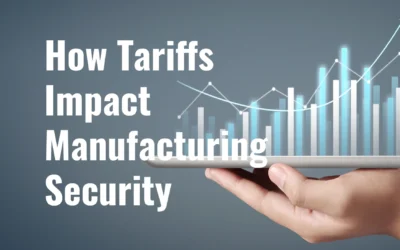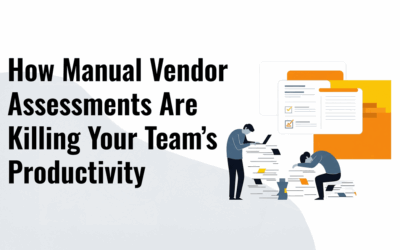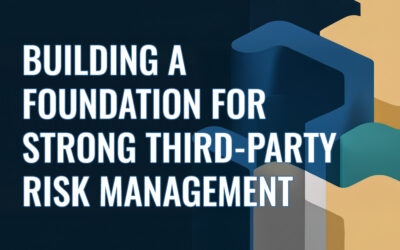While essential for many modern businesses, third-party vendors can represent a significant risk to security and compliance. Even those that meet stringent requirements at onboarding may later introduce vulnerabilities, exposing companies to breaches, regulatory violations, and operational disruptions.
In light of these risks, continuous monitoring has emerged as a crucial tool for maintaining real-time visibility into vendor security. However, it still doesn’t tell the full story. There are certain pressing questions that can only be answered by a robust assessment, which makes it fundamentally critical to evaluate the true security hygiene of your vendors.
The Strengths and Weaknesses of Continuous Monitoring
Continuous monitoring is an important part of a holistic risk management plan, providing real-time visibility into evolving threats and automated alerts for new vulnerabilities. Many regulatory bodies now require it, and countless organizations are making it a standard part of their vendor onboarding process.
It’s a complete paradigm shift from solely relying on annual risk assessments — and an important shift at that. The threat landscape is in a constant state of flux, with new vulnerabilities emerging far too frequently for such an approach to remain viable.
However, some organizations take it a step too far, believing that there’s no longer a need for traditional assessments. But this is a dangerous line of thinking. Continuous monitoring tools are excellent at examining external-facing attack surfaces, such as touchpoints exposed to the internet, cloud-hosted databases, deprecated software, and expired certificates. These real-time insights are quite valuable, but they have limitations that create dangerous blind spots if relied upon exclusively.
Think of continuous monitoring as a satellite view of your vendor’s security landscape. It provides broad coverage, but it can’t understand what’s happening behind closed doors.
For example:
• Employee security education and awareness programs
• Multi-factor authentication implementation and enforcement
• Data encryption practices (in transit and at rest)
• Data hosting locations and practices
Getting insight into these elements requires methods like assessments: the ground-level intelligence that completes the entire risk management picture.
The Real-World Impact of Assessments
For good examples of the role that assessments play in third-party risk management, look no further than the MOVEit breach or the Log4j vulnerability. Many of our clients reached out to us at ProcessBolt following these incidents, needing to know whether their vendors were impacted. While continuous monitoring helped identify which vendors were using these technologies, it couldn’t determine the extent of exposure or the status of remediation.
But ProcessBolt made it easy for them to quickly deploy targeted assessments that focused specifically on these risks, gathering critical information such as:
- Whether vendors were using affected versions of these technologies
- What specific instances were deployed and where
- What remediation steps had been taken
- How the incident affected their overall security posture
This kind of detailed intelligence simply isn’t available through continuous monitoring tools. Therefore, it’s just as essential for making informed risk decisions during critical security events.
ProcessBolt’s Unified Vendor Risk Strategy
At ProcessBolt, we’ve identified three key data sources that are fundamental to creating a truly comprehensive vendor risk management program:
- Continuous monitoring data: Real-time information from internet-facing surfaces to identify vulnerabilities, misconfigurations, and potential breaches.
- Assessment data: Detailed responses from periodic vendor questionnaires that provide insights into security practices and policies that can’t be observed externally.
- Policy documentation: Analysis of vendors’ published security policies and procedures to understand their security governance and compare stated policies against observed practices.
We built ProcessBolt to correlate data from all three sources, using AI to extract intelligence from documents and identify inconsistencies between what vendors report and what our monitoring reveals. For example, when a vendor’s assessment indicates they encrypt all data in transit but continuous monitoring detects unencrypted connections, our system flags this discrepancy for further investigation.
We also make it easier for organizations to conduct these assessments. While many companies pivot entirely to continuous monitoring and forgo these evaluations in the name of time and resources, we’ve built tools that enable organizations to create targeted, streamlined assessments. Furthermore, while other platforms charge for each assessment, we don’t — we believe that introduces an unnecessary barrier to a robust risk management strategy and incentivizes organizations to adopt a weaker security posture.
This multi-faceted strategy allows organizations to get a full understanding of their vendor risk landscape without creating excess work for their vendors or their teams, empowering them to:
- Detect risks early: Identify vulnerabilities as they emerge and prevent breaches before they occur.
- Validate security controls: Ensure vendors follow proper security and compliance frameworks.
- Respond to crises faster: Deploy targeted assessments when new threats arise.
- Build better vendor relations: Establish an open risk management process that instills confidence in all parties.
Combining Continuous Monitoring and Assessments for a Holistic Risk Management Strategy
Even as continuous monitoring transforms how organizations track third-party security, assessments remain a cornerstone of vendor risk management. That’s why strong vendor risk programs combine continuous monitoring, structured assessments, and document analysis to create a complete picture of third-party security. This integrated approach uncovers hidden risks and ensures vendors maintain compliance over time.
Contact ProcessBolt’s third-party risk experts to learn how to streamline this process in a holistic platform, leveraging automation and intelligent assessments to build a more resilient and transparent vendor risk management strategy.




